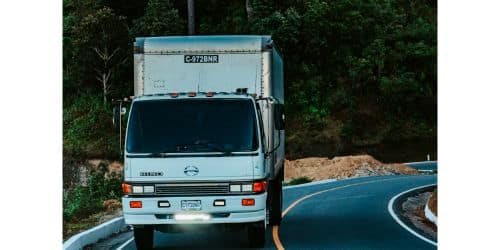Starting a non-CDL hotshot business can be an interesting venture that provides both flexibility and financial potential. However, it is critical to ensure that your business is adequately insured with the appropriate insurance coverage. In this comprehensive guide, we will delve into the world of hotshot insurance, covering everything from the basics to the requirements, costs, and top companies in the industry. This guide will help you understand the insurance market and make informed decisions to protect your business, whether you’re a hotshot driver in Texas or elsewhere.
Understanding the Basics of Hotshot Insurance
Before delving into the complexities of hotshot insurance, it’s critical to understand the principles of this specific type of coverage. In this section, we’ll go over the fundamentals of hotshot insurance, differentiate it from commercial truck insurance, and emphasize the advantages it provides to non-CDL hotshot enterprises.
Hotshot insurance is created exclusively for non-CDL hotshot drivers who deliver commodities in their vehicles. Unlike regular commercial truck insurance, which covers vehicles weighing more than 26,000 pounds, hotshot insurance covers smaller trucks and trailers used by independent operators. This customized coverage ensures that hotshot drivers have essential protection without being burdened by needless costs or coverage limits.
One of the most important benefits of hotshot insurance is the flexibility it provides to non-CDL hotshot firms. Because hotshot drivers often work on a smaller scale, as independent contractors or small business owners, hotshot insurance enables them to receive coverage that suits their individual needs and price limits.
Hotshot insurance gives non-CDL hotshot drivers peace of mind by protecting them from potential risks and liabilities related to their business activities. Accidents, cargo damage, theft, and property damage are just some of the hazards that hotshot drivers confront regularly.
Hotshot Insurance Companies
Finding the best hotshot insurance company for your non-CDL hotshot business is critical. We will feature some of the top hotshot insurance providers known for their expertise, comprehensive coverage options, and exceptional customer service in this section. You can make an informed selection when choosing the insurance provider that best matches your individual needs if you consider these companies.
#1. Progressive Commercial:
Progressive Commercial is a well-known insurance company that provides hotshot insurance designed exclusively for non-CDL hotshot drivers. Also, Progressive Commercial, with its considerable experience in the commercial auto insurance business, offers comprehensive coverage options such as liability insurance, physical damage coverage, cargo insurance, and more.
#2. The Hartford:
Another trustworthy insurance firm that provides hotshot insurance for non-CDL drivers is The Hartford. They have a solid reputation for offering customizable coverage options and providing excellent customer service. Hartford’s coverage includes liability insurance, physical damage coverage, and cargo insurance, providing hotshot drivers with the necessary protection. Furthermore, they provide a variety of perks, like roadside assistance and rental reimbursement, to aid drivers in unexpected situations.
#3. Nationwide:
Nationwide is a well-known insurance company that provides hotshot insurance for non-CDL hotshot businesses. Liability insurance, physical damage coverage, cargo insurance, and other applicable protections are all part of their comprehensive policies. Nationwide is well-known for its financial strength and dedication to client happiness.
#4. Foremost Insurance Group:
Foremost Insurance Group specializes in commercial auto insurance, including non-CDL hotshot driver coverage alternatives. They provide adaptable policies that are tailored to the specific requirements of hotshot firms. Foremost Insurance Group offers liability coverage, physical damage coverage, cargo insurance, and other endorsements to supplement protection.
#5. State Farm Insurance:
State Farm, a well-known insurance provider, also provides hotshot insurance for non-CDL drivers. They offer a variety of coverage options, such as liability insurance, physical damage insurance, and cargo insurance. State Farm is known for its customized attention and excellent financial stability, offering hotshot drivers peace of mind that their insurance needs are being met by skilled hands.
Hotshot Insurance Cost
Understanding hotshot insurance costs is critical for budgeting and maintaining the financial side of your non-CDL hotshot business.
Hot shot insurance for motor carriers normally ranges from $10,000 to $30,000 per vehicle per year. Owner-operators who lease their vehicles to a motor carrier can expect to pay $3,000–$5,000 per vehicle per year.
Factors that Influence Hotshot Insurance Cost
Several factors can influence the cost of high insurance premiums. These factors include:
- Vehicle Size and Type: The size and type of vehicles you use for your hotshot business can have a big impact on insurance costs. Because of the additional dangers connected with their operation, larger and heavier trucks may have higher rates.
- Driver’s Driving Record: Your driver’s driving records are very important in determining insurance premiums. Drivers with a clean driving record and no history of accidents or traffic violations are often regarded as low-risk, resulting in cheaper insurance premiums. Drivers with a history of accidents or violations, on the other hand, may face higher premiums due to the perceived increased risk.
- Cargo Type and Value: The cargo type and value you transport might affect insurance costs. Certain types of cargo, such as hazardous materials or high-value commodities, may necessitate additional coverage, resulting in higher premiums.
- Coverage Limits and Deductibles: The coverage limits and deductibles you select for your hotshot insurance policy influence the cost as well. Higher rates are often associated with higher coverage limits and smaller deductibles.
- Location and Operating Area: The location of your hotshot business can affect insurance costs. Some regions or states may have higher accident rates or more difficult driving conditions, resulting in higher premiums.
Hotshot Insurance Requirements
To operate lawfully and protect your non-CDL hotshot business, it’s vital to understand the insurance requirements specific to hotshot drivers. In this section, we’ll look at the insurance requirements imposed by state and federal regulations, as well as the coverage limits and insurance types you’ll need to meet your legal obligations.
Hotshot drivers, like other commercial vehicle operators, must comply with both state and federal insurance standards. These requirements are intended to ensure that drivers have adequate coverage to protect themselves, their cargo, and other parties involved in road accidents or incidents. Noncompliance with these requirements may result in penalties, fines, and the suspension of your operating authority.
State Insurance Requirements:
Insurance requirements for hotshot drivers may differ by state. It is critical to become acquainted with the specific insurance requirements in the states where you operate or intend to operate. States typically require liability insurance as a bare minimum, with additional coverage such as cargo insurance required depending on the type of cargo being transported.
Federal Insurance Requirements:
Hotshot drivers must follow federal regulations set by the Federal Motor Carrier Safety Administration (FMCSA) in addition to state requirements. The FMCSA requires interstate hotshot drivers to carry specific levels of liability insurance. Currently, the minimum liability coverage required for non-hazardous freight is $750,000, with higher coverage limits required for hazardous material transportation.
Cargo Insurance Requirements:
Because hotshot drivers frequently transport valuable cargo, cargo insurance is essential coverage. Although federal regulations do not specifically require cargo insurance, shippers or brokers may require hotshot drivers to carry cargo insurance to protect against damage, theft, or loss of goods while in transit. It is critical to assess the value of the cargo you typically transport and consider cargo insurance to protect your business.
Meeting the insurance requirements for your non-CDL hotshot business is not only a legal obligation but also a responsible approach to protecting your assets and mitigating potential financial risks. Make sure you maintain the necessary coverage limits and types of insurance in accordance with state and federal regulations, as well as any additional requirements set forth by shippers or brokers you work with.
Hotshot Insurance Texas
If you run a hotshot business in Texas, you must be aware of the special insurance regulations and concerns that relate to your operations there. In this section, we will look at the most important components of hotshot insurance in Texas, such as state standards, policy alternatives, and other considerations to ensure compliance and effectively safeguard your non-CDL hotshot business.
Insurance Requirements in Texas:
To operate legally, hotshot drivers in Texas must meet specific insurance criteria. The state requires a minimum level of liability insurance, which includes bodily injury and property damage liability. The minimum liability coverage limits for non-hazardous freight in Texas are $300,000 per occurrence for bodily injury and $100,000 for property damage.
Beyond Liability Insurance:
While liability insurance is the minimum requirement, it is critical to investigate extra coverage alternatives to effectively safeguard your hotshot business. Physical damage coverage, which includes collision and comprehensive coverage, can assist in covering the expenses of repairing or replacing your vehicles in the event of an accident, theft, vandalism, or other covered incident.
Special Considerations for Texas:
Texas is a huge state with a wide range of driving conditions and potential hazards. When choosing hotshot insurance in Texas, consider the sorts of cargo you transport, the geographical locations you operate in, and the potential weather-related risks peculiar to Texas, such as hurricanes or severe storms.
Choosing an Insurance Provider:
When looking for a hotshot insurance provider in Texas, look for organizations that have experience and competence in the state’s commercial auto insurance industry. Look for providers who have a good track record of serving businesses in the Texas area, offer specific coverage options for hotshot drivers, understand the unique risks associated with your activities, and have a solid track record of serving businesses in the Texas market.
What Is Hotshot Insurance?
Hotshot insurance is a type of specialty insurance developed for hotshot drivers and businesses. Hotshot drivers are often independent contractors or small enterprises that provide expedited transportation services utilizing non-CDL trucks or other similar vehicles.
How Does Hotshot Insurance Work?
Hot shot insurance works by insuring the vehicles, drivers, and cargo used in hot shot activities. Here are the essentials of hotshot insurance:
- Liability Coverage
- Physical Damage Coverage
- Cargo Coverage
- Additional Coverage Options
Premiums are the payments you give to the insurance provider in exchange for coverage under hot shot insurance.
Who Offers the Cheapest Hotshot Insurance?
It’s difficult to find a single company that regularly provides the cheapest hot shot insurance. Insurance premiums vary depending on individual conditions and can differ from one firm to the next.
Follow these steps to find the best hotshot insurance for your unique needs:
- Look around and compare prices.
- Think about independent insurance agencies.
- Consult with insurance agents
- Examine your coverage options and deductibles.
- Policy bundles
Remember that price should not be the only consideration when choosing hot shot insurance.
What size trailer do I need for a hot shot?
A non-CDL hotshot driver should typically aim for a trailer size of 30 to 40 feet. This size range assures that the overall weight of the vehicle, trailer, and cargo does not exceed the 26,000-pound limit, which is the maximum allowable weight before requiring a CDL.
Is hot shot trucking worth it?
The value of hot shot trucking is determined by a variety of factors, including your own circumstances, tastes, and the specific dynamics of the hot shot trucking sector. Hotshot drivers can expect to earn between $60,000 and $120,000 per year on average. Some top-tier truckers can earn considerably more.
What is the best truck for a non-CDL hotshot?
Here are a few popular truck options often used in non-CDL hotshot operations:
- Ford F-350
- Ram 3500
- Chevrolet Silverado 3500
- GMC Sierra 3500
- Dodge Ram 3500
What are the disadvantages of hotshot trucking?
Some potential disadvantages to consider include: starting your own trucking business and becoming a hot shot trucker means you are totally responsible for all maintenance needs and charges, just like owning and running any small business. In any sector, being your own boss does not ensure jobs.
Conclusion
Non-CDL hot shot drivers need insurance to protect themselves from any dangers and liabilities. It is critical to learn the fundamentals, investigate numerous insurance companies, fulfill your state or region’s standards, and explore various coverage options.
Whether you’re a hotshot driver in Texas or elsewhere, understanding the world of hotshot insurance is critical to the success of your business. You can secure your operations and assets by understanding the requirements, costs, and coverage alternatives and engaging with reliable insurance companies. This will give you the confidence to pursue your hotshot business ventures.
- Commercial Truck Insurance Georgia: All to Know
- Commercial Truck Insurance Companies: Top 7 Best in 2023
- TEXAS BUSINESS INSURANCE: Cost, Best Services & Quotes
- POLICYGENIUS LIFE INSURANCE REVIEW 2023






